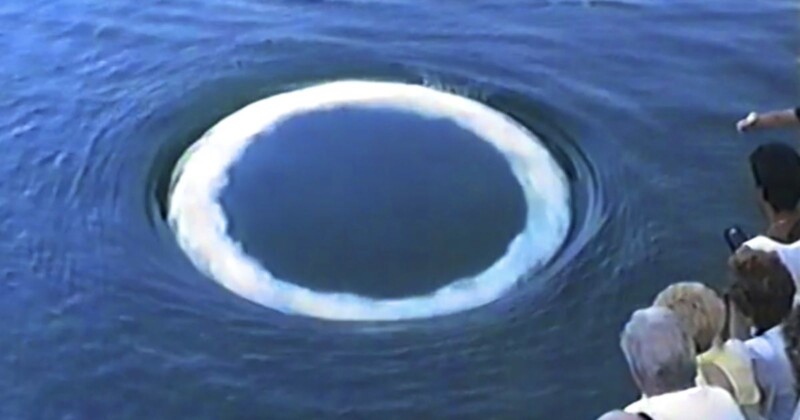Scientists Photograph Humpback Whales Blowing Bubble Rings to ‘Speak’ to Humans

For the first time, a team of scientists has photographed humpback whales blowing bubble rings to communicate with humans.
A team of scientists from the SETI Institute and the University of California at Davis took captured images of 11 whales producing 39 bubble rings across 12 different instances.
It’s the first time humpback whales have been observed creating stable bubble rings during friendly interactions with humans, such as approaching swimmers or boats.

Scientists believe that humpback whales may be sending the large bubble rings — similar to how a person might blow smoke rings — during friendly interactions with humans. The researchers say these bubble rings may represent a novel form of non-human expression or curiosity.
In a paper published in Marine Mammal Science, the scientists say this rarely-known behavior may serve as a form of play or communication. While humpback whales are already known to use bubbles to hunt or display dominance during competition for mates, these new observations suggest a more social—and possibly playful—purpose behind their bubble-making.
“Humpback whales often exhibit inquisitive, friendly behavior towards boats and human swimmers,” Jodi Frediani, co-lead author and marine wildlife photographer, says in a press release. “We’ve now located a dozen whales from populations around the world, the majority of which have voluntarily approached boats and swimmers blowing bubble rings during these episodes of curious behavior.”
According to a report by IFLScience, researchers gathered images and videos of the bubble rings from various sources, including whale watching trips, small planes, and private vessels. The team also analyzed drone footage to determine whether the whales created bubble rings even when humans weren’t nearby.
10 of the 12 episodes of bubble ring production were made in the presence of humans or swimmers near the whales, and six of the 12 had more than one whale present. The team reported no signs of aggression toward either humans or other whales during these events. Instead, the whales appeared calm—perhaps even curious — suggesting a relaxed and inquisitive state.
These bubble rings were observed in Hawaii, the Dominican Republic, Mo’orea, and off the U.S. Atlantic coast.
The SETI Institute’s team says the images will contribute to their larger mission: studying non-human intelligence to inform the search for extraterrestrial life.
“Because of current limitations on technology, an important assumption of the search for extraterrestrial intelligence is that extraterrestrial intelligence and life will be interested in making contact and so target human receivers,” Dr. Laurance Doyle, SETI Institute scientist and co-author, says. “This important assumption is certainly supported by the independent evolution of curious behavior in humpback whales.